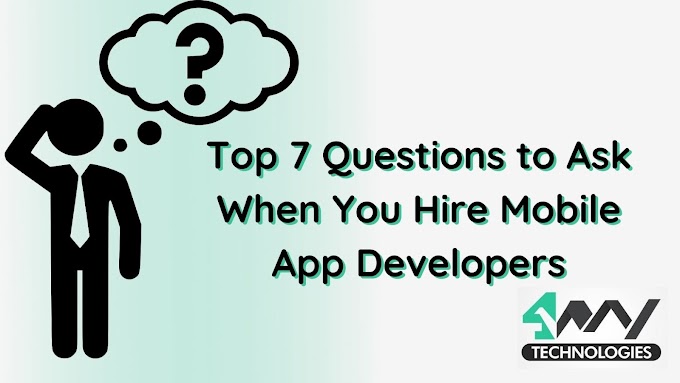We live in the age of the digital world, where we can get almost anything online. In such times, businesses need to discover different ways to communicate with their customers. On-demand service apps become an absolute solution. Ola, Urban clap, Handy, Airbnb, etc are some of the on-demand mobile apps. These apps permit you to offer on-demand service to an extended consumer base.
The on-demand mobile app development connects businesses and customers. Likewise, it also enables the company to serve the best experience. From ordering food to taking courses, on-demand apps are in trend. These days, consumers prefer to avail services from the comfort of their homes. Nevertheless, most companies are not equipped with market dynamics.
So, you must be
wondering how these apps can add value to your business? Let’s look into it.
The Rise in Demand for On-Demand Mobile Apps
The on-demand service industry is flourishing. Let’s take a look at the reason why so many people are switching to on-demand apps!
- Choice of Products: The biggest difficulty customers face when they visit any outlet is the limited variety. They are left with no option but to pick from what’s there in the shop. Buyers can check multiple online stores on the internet with on-demand apps.
- Economical Solutions: Buyers always look for competitive prices. On-demand mobile apps allow the price comparison of different providers. This establishes transparency. And buyers can smoothly select the offerings they feel are the most profitable.
- Availability: Before these mobile apps, you’d need to go out physically to the store. With on-demand mobile apps, you don’t have to stand in a queue for your order any more. All you need to do is to order online and you'll get your food at home.
- Zero Time Restrictions: Most on-demand services are there 24*7. If you want to buy a mobile, you can directly order online at any time. Whether it’s 4 am or 12 pm, you can use their on-demand app.
- Security: In the case of an on-demand mobile app, you own the app code. Thus, no one can mess with your app data. Also, these apps are designed with the best security policies. And ensures information stays safe and secure.
A Standard On-Demand Platform Works in the Following Manner:
- First, the customer puts a request
- App connects them with the provider
- Then, the provider accepts the request
- User selects the payment method
- After that, the provider delivers the service
- User avails the service and makes the payment
On-Demand Mobile App Business Models
On-demand mobile apps
are designed on one of the three business models mentioned below:
Business to Business Model (B2B)
On-demand B2B apps are
designed to connect businesses. These apps are robust, feature-rich, and also
they verify transactions across the globe.
Moreover, B2B apps can
be classified into:
- Horizontal: Serving multiple sectors or industries
- Vertical:
Serving a single industry or sector
Business to Consumer Model (B2C)
The users of on-demand
apps are end-users in the B2C model. With such apps, companies facilitate the
movement of goods or services directly with consumers.
For instance, Zomato.
The Zomato app enables its users to skip the line. They either get their order
at home or takeaway. Some of the B2C on-demand apps are Uber eats, Ola, etc.
Consumer to Consumer Model (C2C)
C2C apps allow users to
transact their products and services. For Instance, platforms like Upwork,
Fiverr, etc are C2C platforms. The price value of an on-demand mobile app
depends on the business model. So, before investing in any app be sure to plan
your business model first.






0 Comments